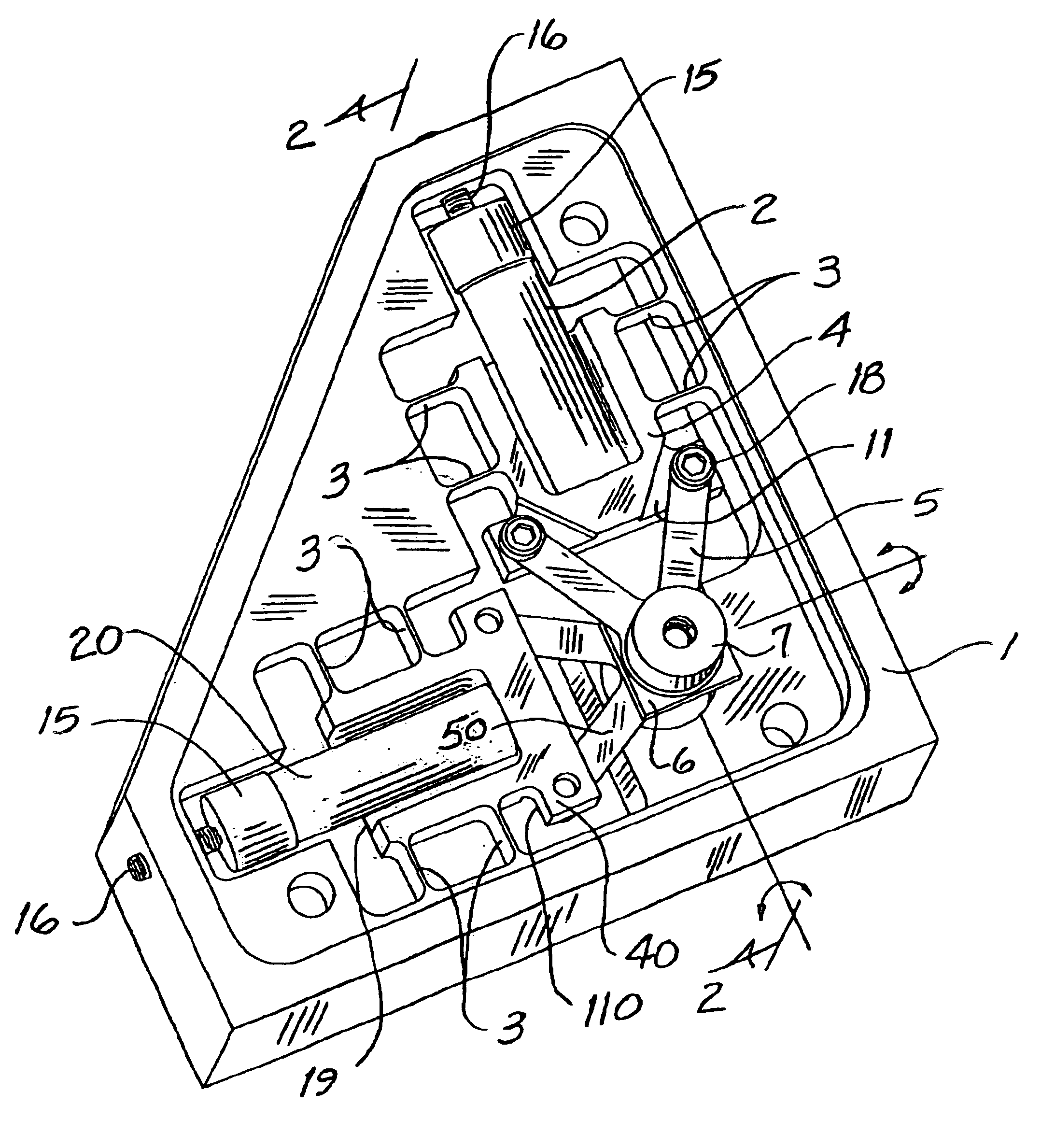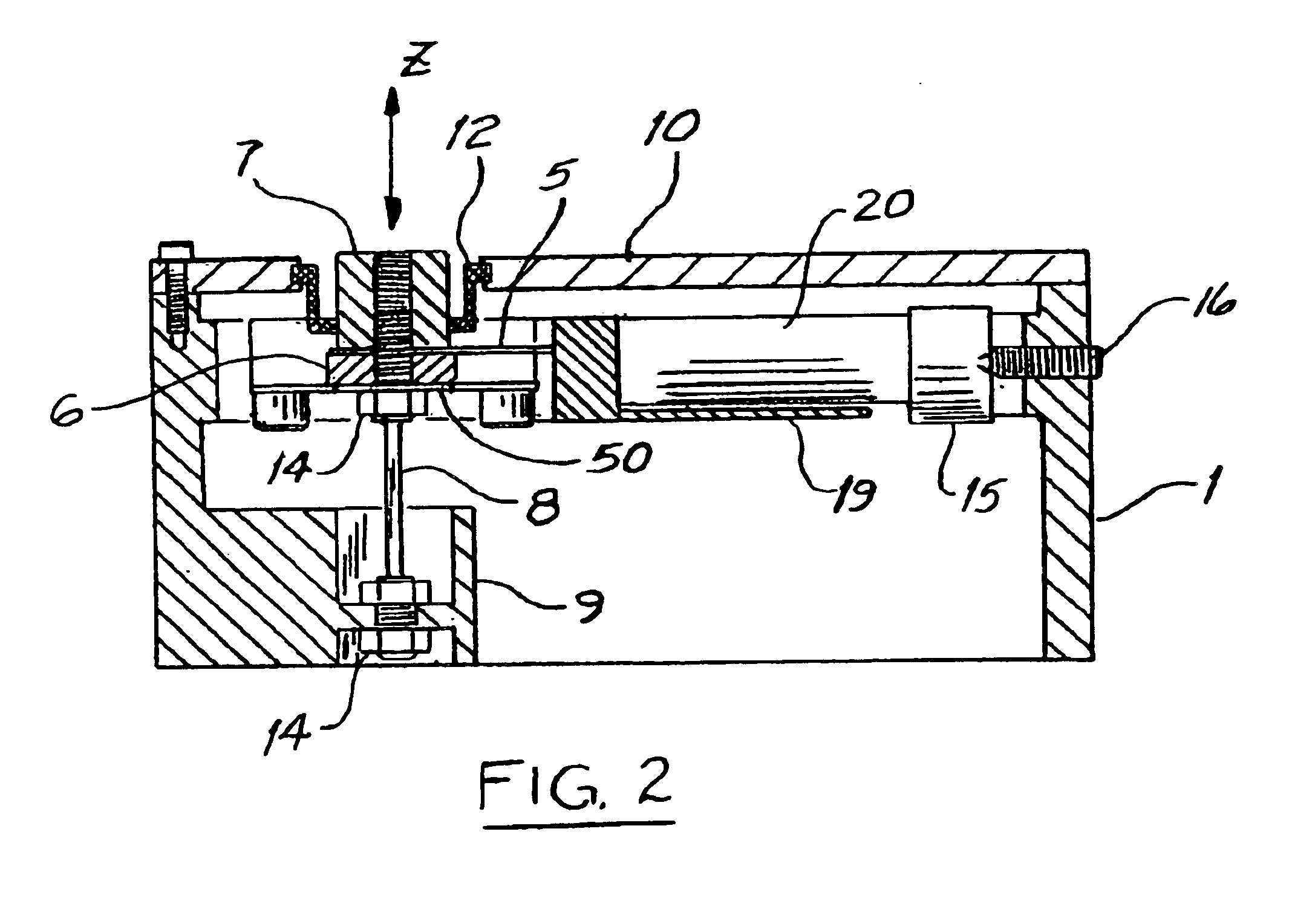High speed scanning or steering device
a scanning or steering device, high-speed technology, applied in the direction of instruments, machine supports, other domestic objects, etc., can solve the problems of requiring devices may require high resonant stiffness when, and manufacturing costs are an issue in certain high-volume products, so as to prevent undesirable bending forces and prevent undesirable translation movements or resonances
- Summary
- Abstract
- Description
- Claims
- Application Information
AI Technical Summary
Benefits of technology
Problems solved by technology
Method used
Image
Examples
Embodiment Construction
FIG. 1 is a perspective view of the assembled inventive device with an optional cover removed.
FIG. 2 is a cross sectional view of the device shown in FIG. 1, taken along lines 2—2 thereof.
As seen in FIG. 1, a first relatively wide pocketed translating frame element 4 and a second like frame element 40 are disposed orthogonally within a base structure 1. Each frame element 4 and 40 is restrained in five of six possible degrees of mechanical freedom by a set of parallel motion flexures 3. The parallel motion flexures 3 stiffly restrains the pocketed translating frame elements 4 and 40 in all possible degrees of freedom except one desired translation axis. Each of the translating frame elements 4 and 40 employ an integral shear stiffener 19 across the pockets in frame elements 4 and 40 to further reduce undesired flexibility and maximize resonant frequency. Each translating frame element 4 and 40 is acted upon by a first electromotive actuator 2 and a second like actuator 20, respectiv...
PUM
 Login to View More
Login to View More Abstract
Description
Claims
Application Information
 Login to View More
Login to View More - R&D
- Intellectual Property
- Life Sciences
- Materials
- Tech Scout
- Unparalleled Data Quality
- Higher Quality Content
- 60% Fewer Hallucinations
Browse by: Latest US Patents, China's latest patents, Technical Efficacy Thesaurus, Application Domain, Technology Topic, Popular Technical Reports.
© 2025 PatSnap. All rights reserved.Legal|Privacy policy|Modern Slavery Act Transparency Statement|Sitemap|About US| Contact US: help@patsnap.com



